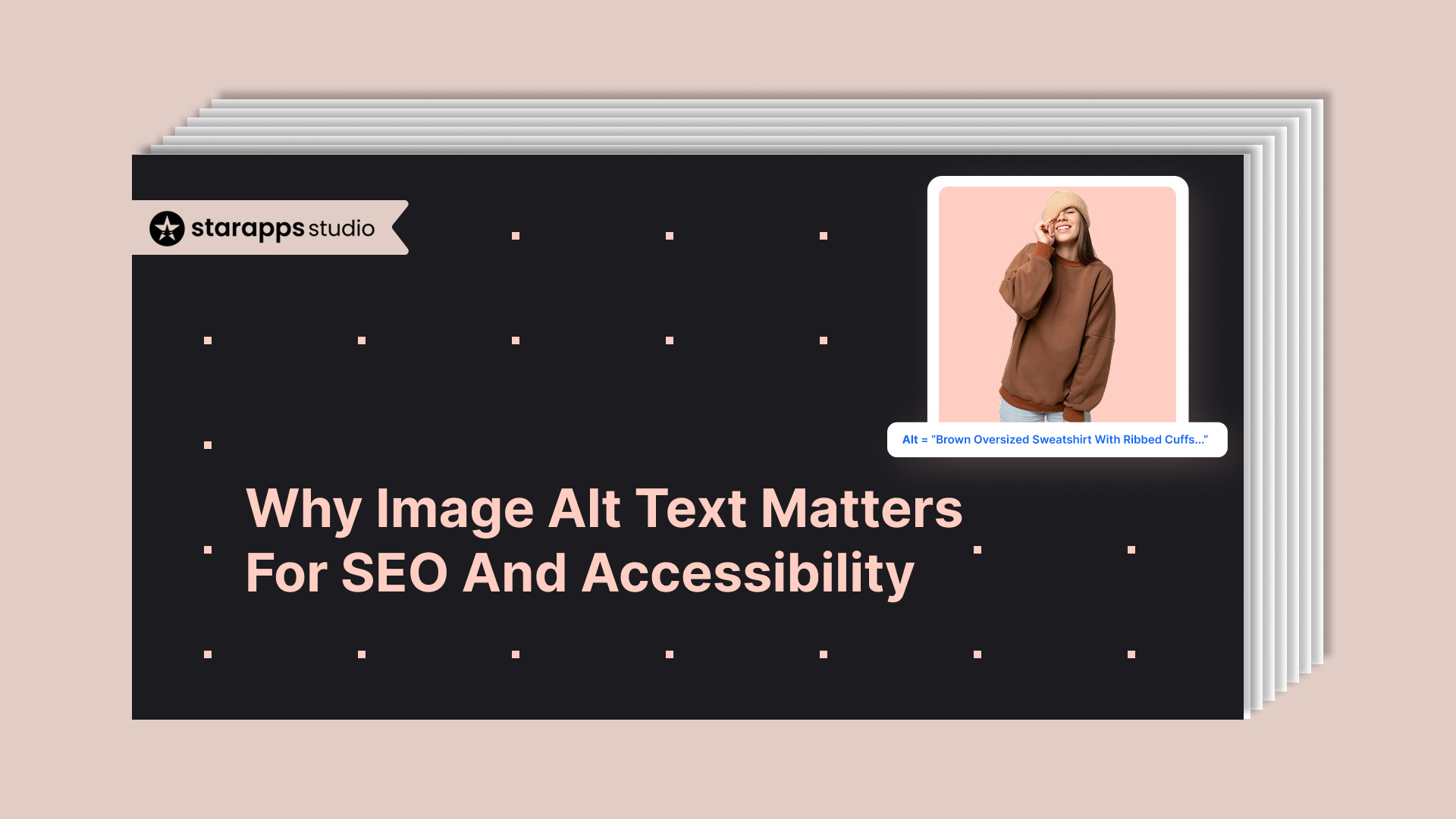
Learn why image alt text matters for SEO and accessibility, and how it can improve your Shopify store's visibility, user experience, and search engine rankings.
In the competitive world of e-commerce, visuals are key to grabbing customer attention and driving sales. But just having images on your Shopify store won’t cut it if you want to maximize SEO and ensure accessibility. It's not enough to simply showcase great photos, you need to enhance them for search engines and make them accessible for all users.
This is where alt text (alternative text) comes in, and it’s essential to understand why image alt text matters for SEO and accessibility. It plays a key role in boosting your site's search engine visibility and enhancing the experience for users with disabilities.
This article will guide you through everything you need to know about alt text and how to optimize it for your Shopify store.
TL;DR
- Alt text improves SEO by helping search engines understand images.
- Alt text improves accessibility for users with visual impairments.
- Alt text makes images discoverable in search engine results.
- Properly written alt text boosts user experience and engagement.
- Adding alt text to all images is essential for a fully customized Shopify store.
What is Alt Text?
Alt text, or alternative text, is a written description of an image that is used by screen readers or displayed when the image cannot load. It provides context for users who are visually impaired or those with poor internet connections. Alt text helps search engines understand the content of an image, allowing them to index it properly. In Shopify, adding alt text to your images is essential for making your site more accessible and search engine-friendly.
Alt text isn’t visible on the page but is embedded within the HTML code of your image tags. When done right, alt text can improve the user experience, helping those with visual impairments navigate your store more easily. Additionally, alt text plays a key role in search engine optimization (SEO), as it helps search engines like Google better understand the content of your images.
Real-World Examples of Alt Text on E-Commerce Images
Alt text is an essential component for SEO and accessibility, ensuring that e-commerce images are discoverable and usable for all customers. Here are two examples of brands effectively using alt text for their product images:
Etsy
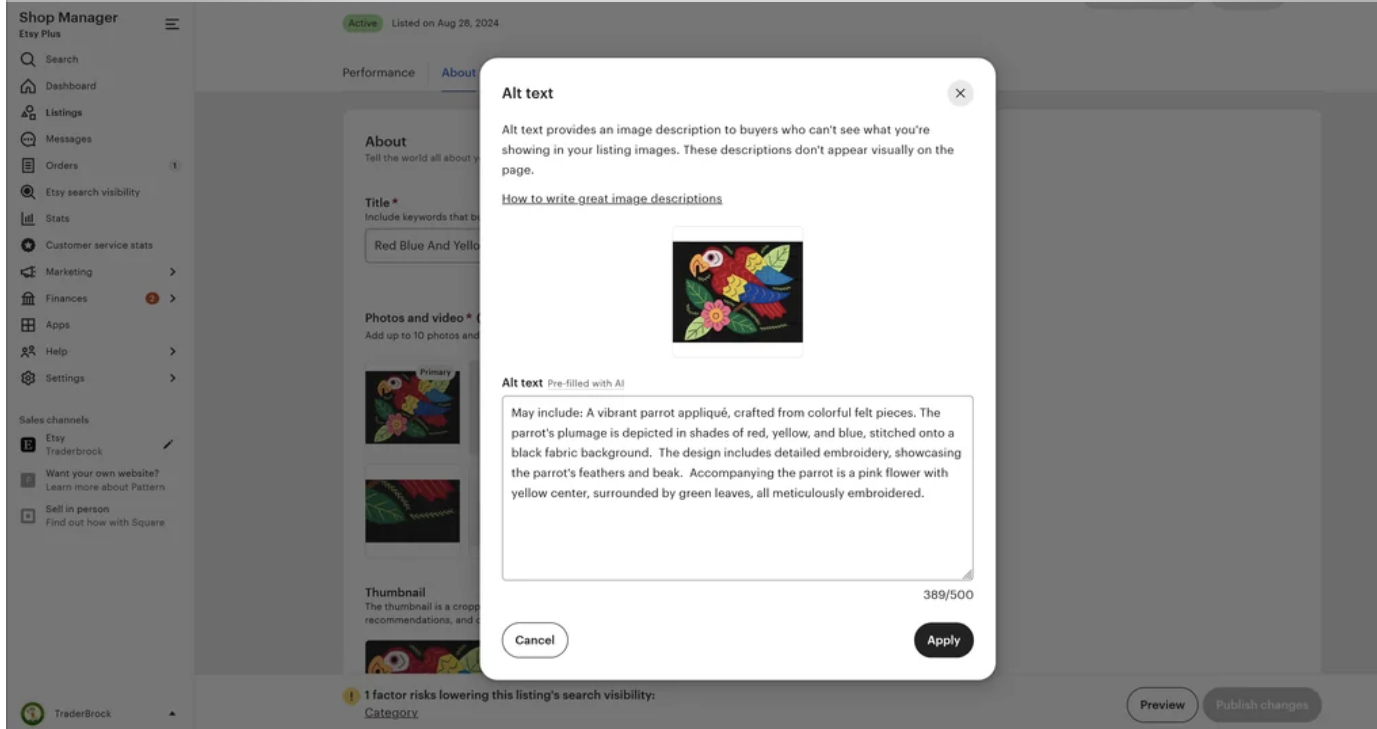
Etsy uses detailed alt text for its product images, providing clear and descriptive information about each item. This ensures that search engines can index the images properly and that users with visual impairments can understand the content of the images.
Macy's
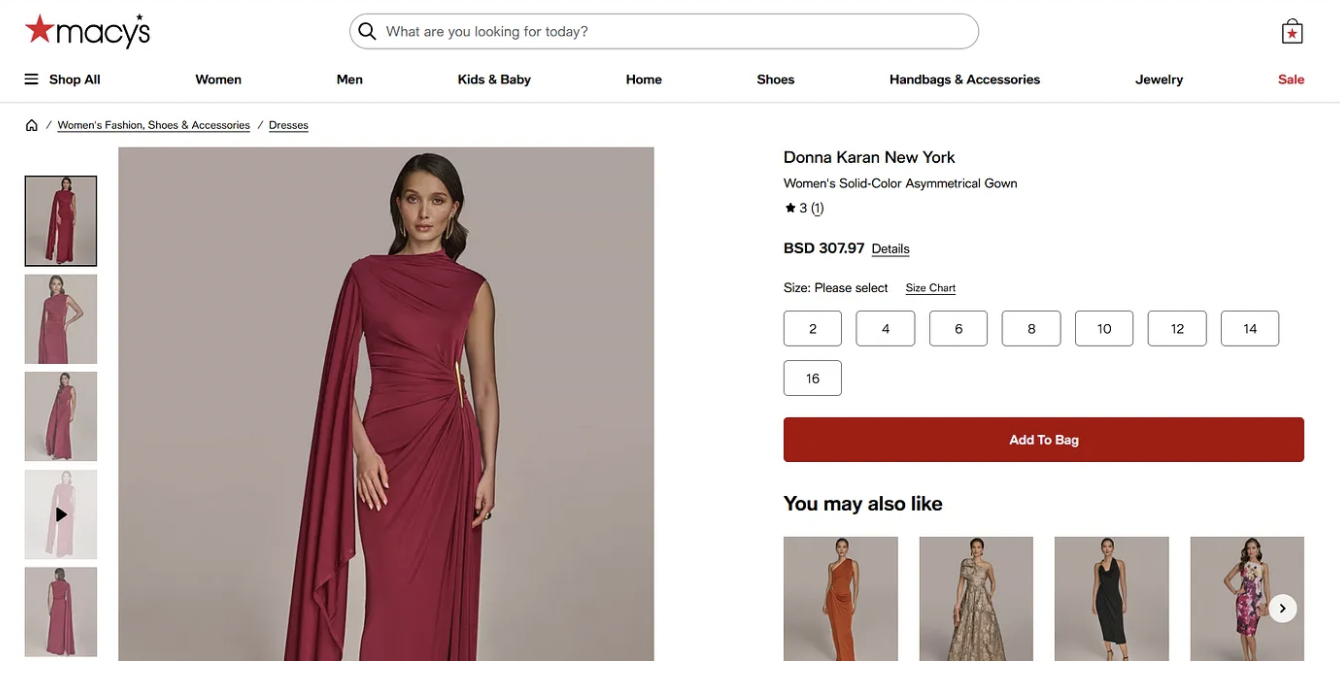
Macy's employs concise, descriptive alt text for its product images, focusing on key product details like type, size, and brand. This helps customers relying on screen readers understand the product and improves search engine visibility.
By incorporating thoughtful, descriptive alt text, these brands ensure their images are both discoverable by search engines and accessible to all customers, leading to improved user experience and increased sales.
Now that we understand what alt text is, let's explore how it impacts your SEO.
How Does Alt Text Impact SEO?
Alt text makes images accessible and plays a significant role in improving your website’s SEO. It helps search engines understand the content of your images, boosting your site’s visibility. Below are the key ways in which alt text impacts SEO.
- Alt Text Helps Search Engines Understand Images: Search engines can't "see" images the way humans do, so they rely on alt text to understand what an image is about.
- Alt Text Drives Traffic: By adding keyword-rich descriptions, alt text increases your Shopify store’s visibility in search engine results, making your site more discoverable.
- Better Search Engine Indexing: Alt text provides search engines with important context, which allows them to index your images properly and rank them in relevant search queries.
- Higher Search Engine Rankings: Well-optimized alt text for all images can improve your store’s SEO and increase the chances of ranking higher in search engine results.
- Increased Traffic and Engagement: When customers search for products that match your alt text, they are more likely to land on your store, driving more traffic and increasing your chances of conversions.
Now that you’ve understood the crucial impact of alt text on SEO, let’s look at when you should be using alt text to maximize its benefits.
When Should I Use Alt Text?
Alt text should be applied to every image that adds value to the user experience, whether it's a product image, logo, or content graphic. It's essential for SEO and accessibility. Below are the times when you should always make sure alt text is used.
1. Product Images
For each product listing on Shopify, adding alt text to the product images helps potential customers find your product through image search results. To simplify this process and ensure consistency across your store, consider using Variant Alt Text King from StarApps Studio. This tool automatically enhances alt text for all your images, saving you time and enhancing your store’s SEO and accessibility.
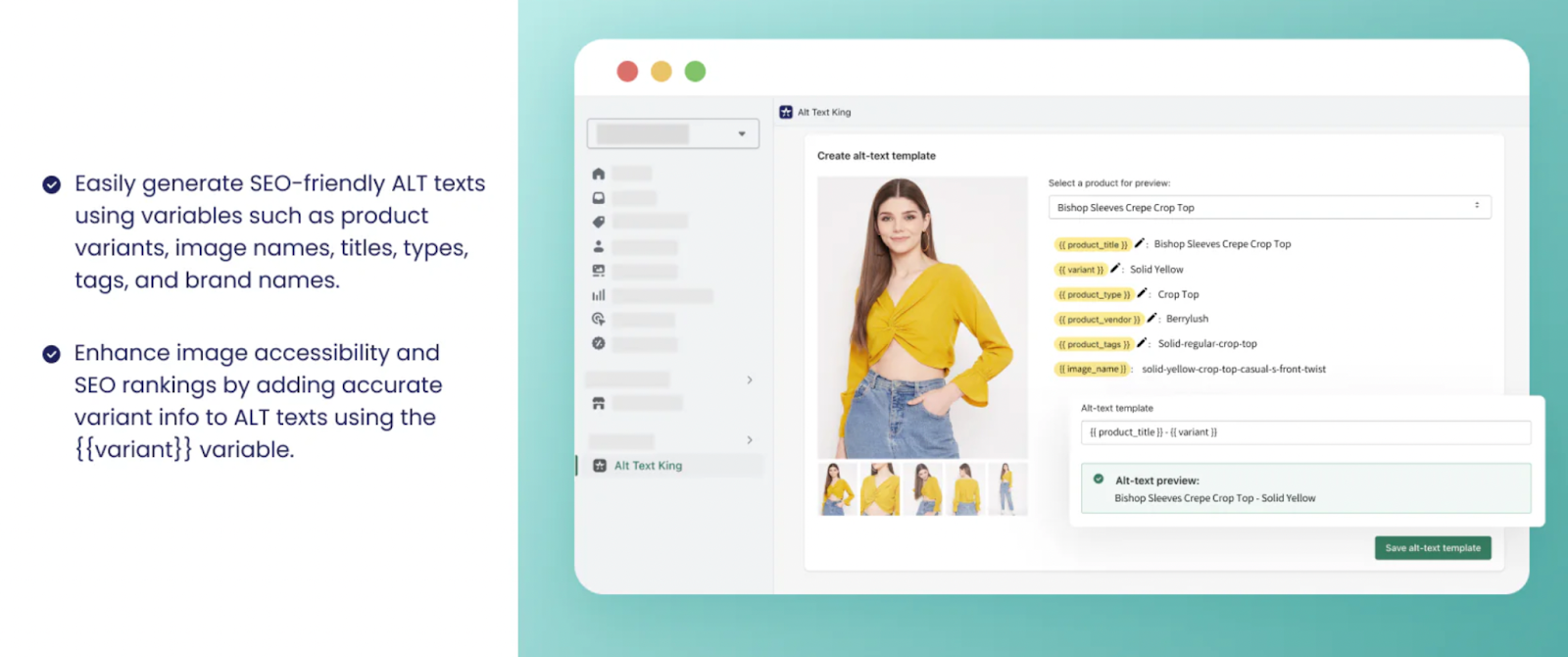
2. Site Graphics and Logos
Logos and site-wide graphics should also have alt text that clearly describes what they represent. For instance, an alt text for a logo might read "Shopify store logo for XYZ brand."
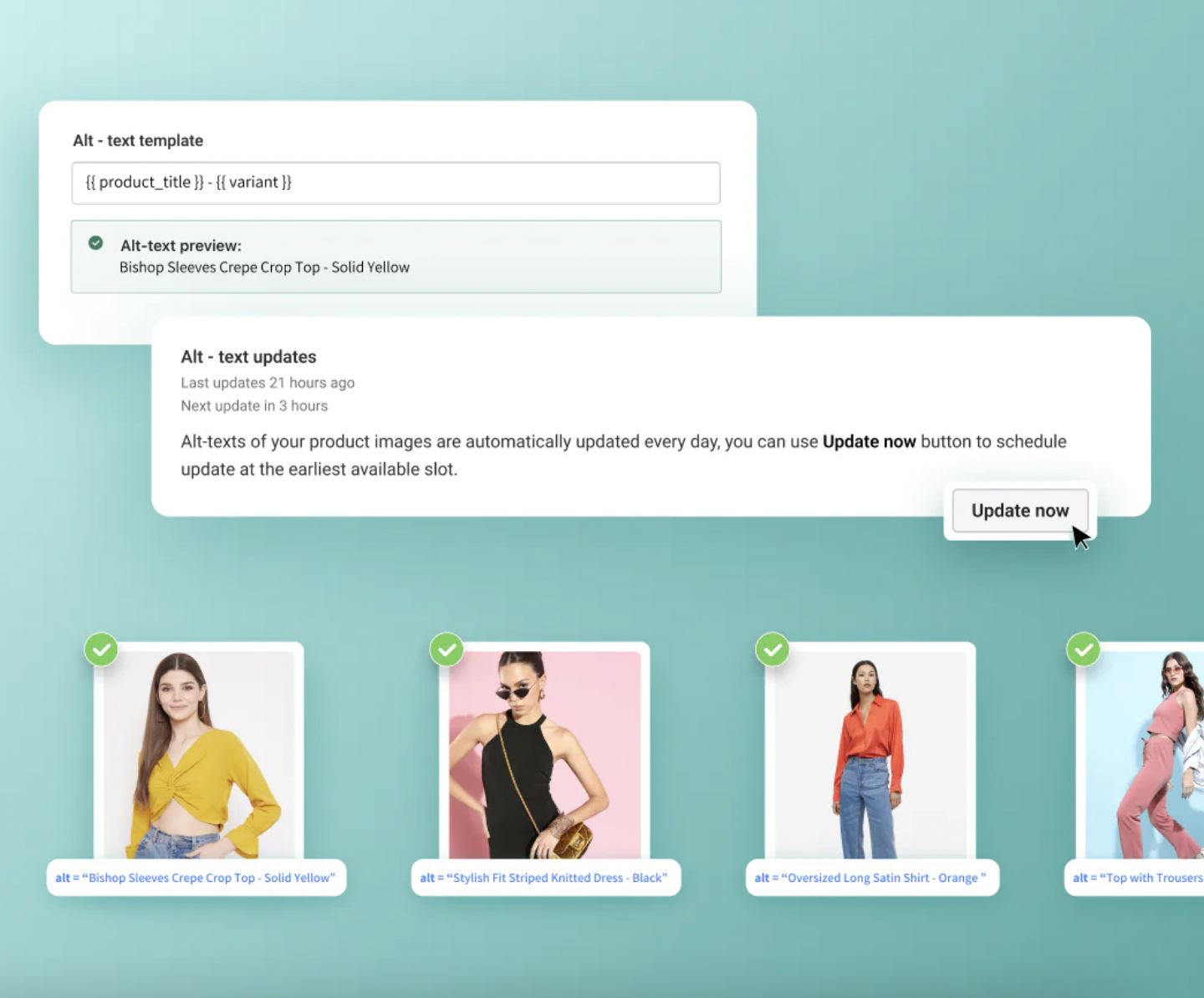
With a clear understanding of when to use alt text, it’s time to learn how to craft the best descriptions.
How To Write Alt Text?
Writing alt text in Shopify is straightforward, but it's important to follow best practices to make it both SEO-friendly and accessible. Shopify provides an easy-to-use interface to add alt text to all your images. Here’s a step-by-step guide to writing effective alt text on your store.
1. Access the Image

The first step is to access the image you want to add alt text to. Log into your Shopify admin panel and navigate to the product page, blog post, or any other section where the image is located.
Once you find the image, make sure it’s the one you want to optimize with alt text. Whether it's a product image, a banner, or a logo, you’ll need to ensure that each image on your store has an appropriate alt text.
2. Click on the Image
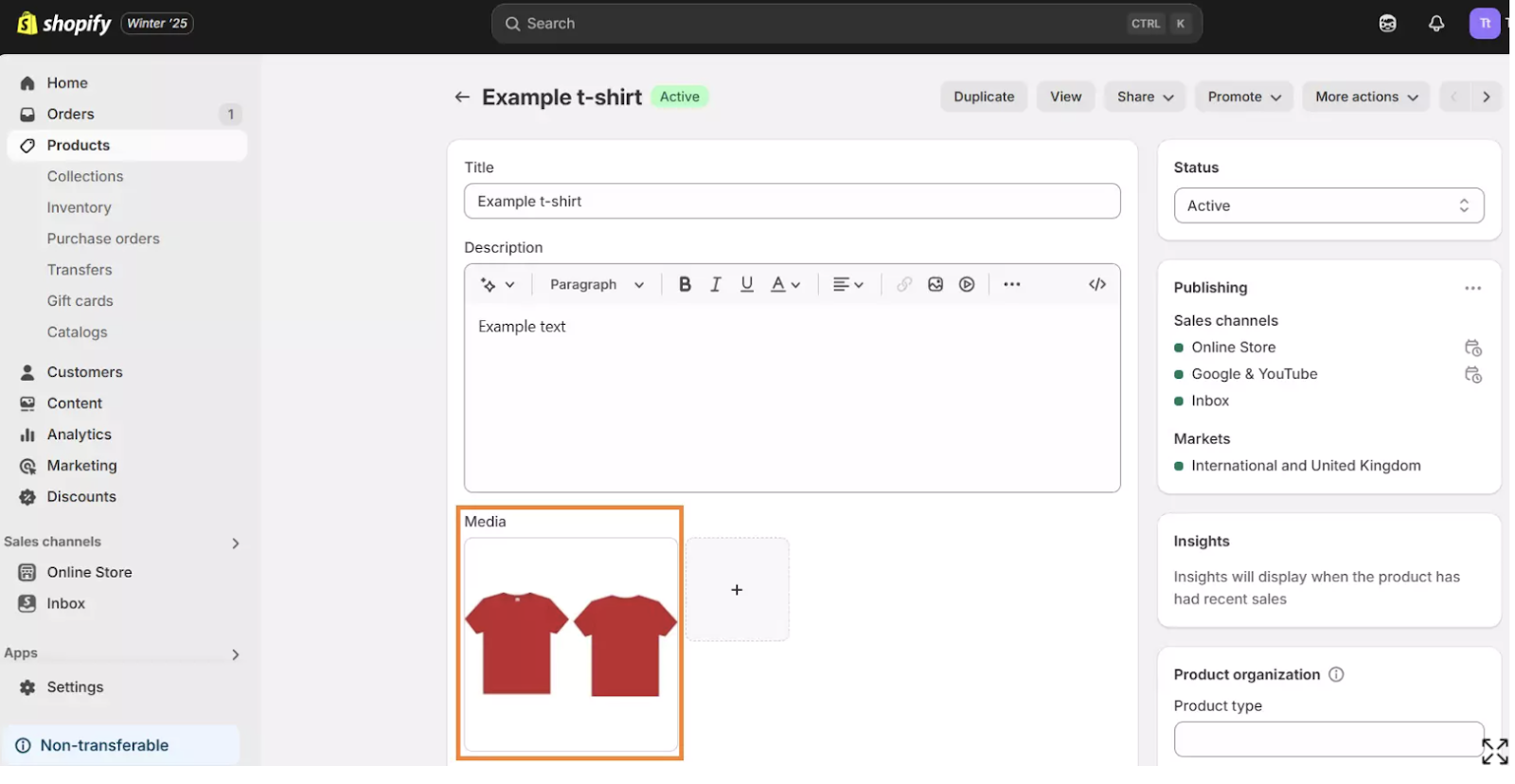
After locating the image, click on it to open the image settings. In most cases, clicking on the image will open a window or menu that allows you to edit the image details. This step is crucial because you want to guarantee that you’re working on the correct image and are in the right place to add alt text to it.
3. Find the Alt Text Field
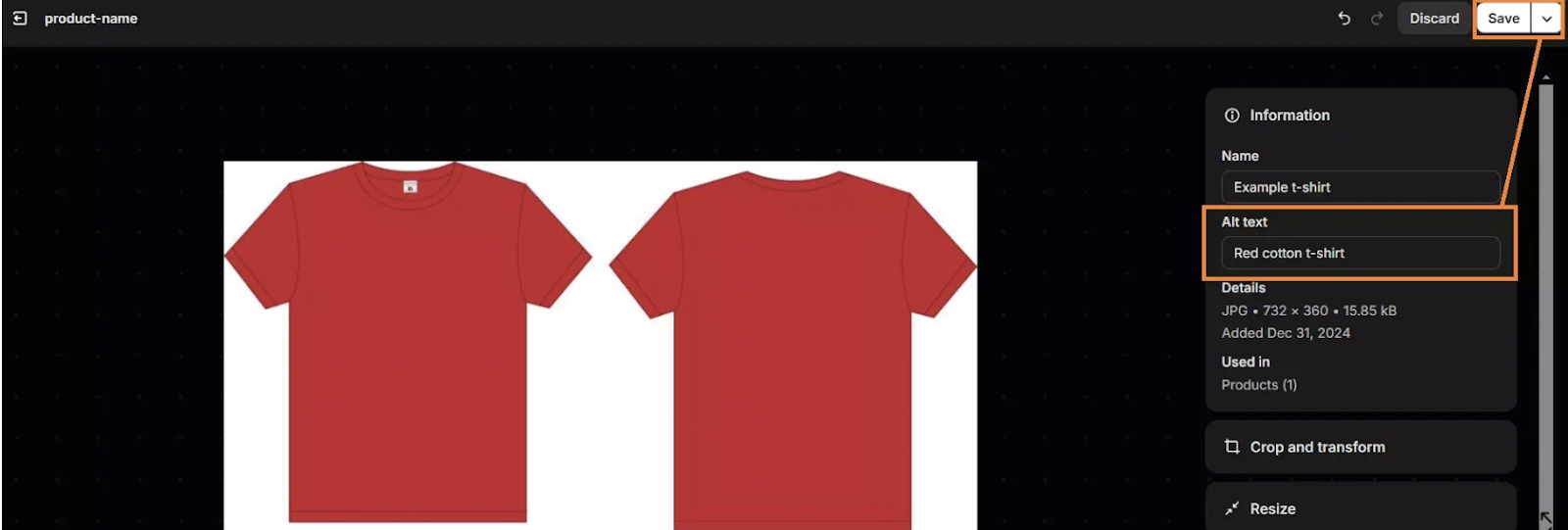
In the image settings window, you should find a dedicated field labeled “Alt text” or “Image Alt Text.” This field is where you will input the descriptive text for your image. It's essential to locate this field for every image you upload to Shopify, as alt text helps search engines index your images and provides a more accessible experience for users with disabilities.
4. Write a Descriptive Text
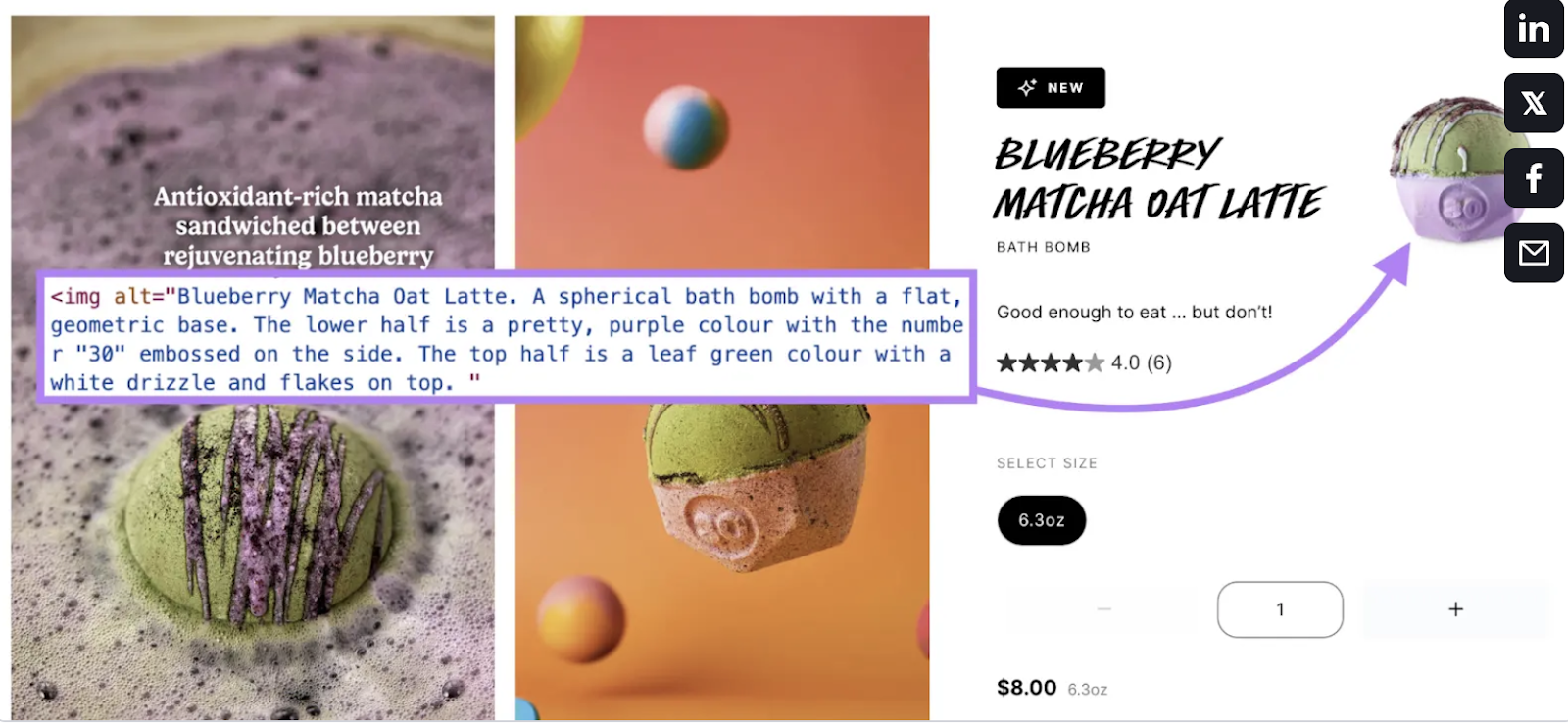
Now that you’ve found the alt text field, it’s time to write a concise yet descriptive text that clearly explains the image. Focus on providing a detailed description of what’s in the image, including relevant keywords and context.
For example, if you’re adding alt text for a product image, describe the product, its color, and its key features. Keep the description informative, but avoid stuffing too many keywords in an unnatural way.
5. Save Your Changes
After writing the alt text, make sure to save your changes. Shopify will automatically update the image with the alt text you’ve added. It's important to repeat this process for every image across your site, from product listings to blog images. By guaranteeing every image has appropriate alt text, you’re improving the SEO of your store and making it more accessible to all users.
By following these simple steps in Shopify, you’ll certify that all your images are properly optimized for SEO and accessibility. Next, let’s look at some examples to see the difference between good and bad alt text and understand what works.
Examples of Good & Bad Alt Text
Understanding the difference between good and bad alt text is key to improving your SEO. Good alt text is clear, descriptive, and relevant, while bad alt text lacks detail or is overly vague. Below are some examples that show the contrast.
Good Alt Text Examples
- For a product image of a cream colored purse: "A small cream purse with a button closure."
This description clearly explains the color and key features of the handbag. It provides enough information for search engines and users to understand what the image represents. The alt text is also concise yet descriptive, making it both useful for SEO and accessibility.
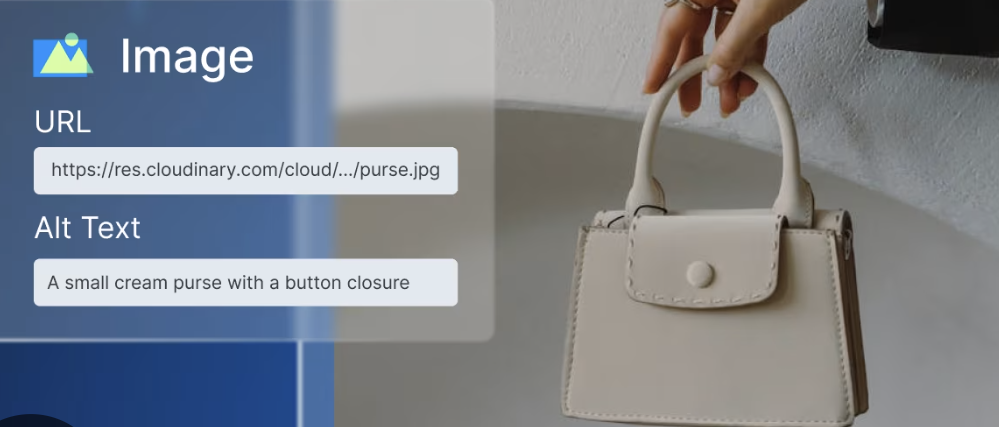
- For a banner image showcasing a sale: "50% off end of season sale on women’s clothing at XYZ Store."
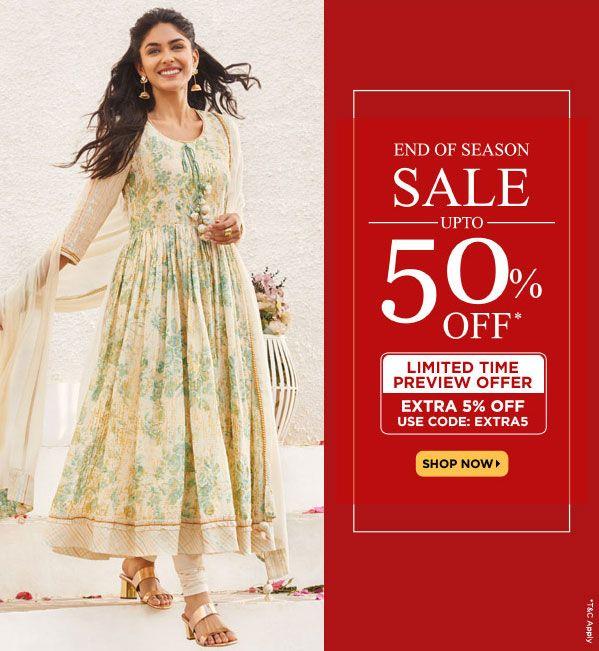
This alt text is specific to the promotion being shown in the banner. It includes the key details of the sale, such as the discount and the type of products involved, making it useful for both search engines and users. It also provides context to the image, helping to drive relevant traffic.
- For a logo image: "XYZ Store logo featuring a minimalist design."
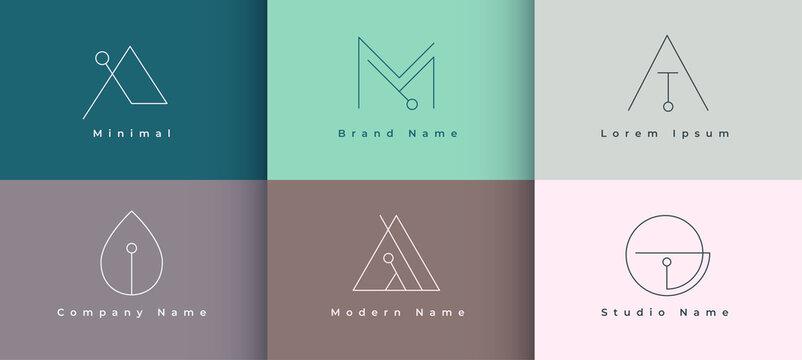
This alt text offers a clear and concise description of the logo. Instead of just using "logo," it provides context by mentioning the brand and describing the design style. This helps with SEO and accessibility, as screen readers and search engines can better understand the logo’s significance.
Bad Alt Text Examples
- For a product image of a red leather handbag: "Handbag"
This alt text is too vague and uninformative. It doesn’t convey any details about the product, such as its color, material, or features. A clearer description would help search engines understand what the image represents and provide more context for users relying on screen readers.
- For a banner image showcasing a sale: "Sale"
While the word "sale" is relevant, it is too general and doesn't provide enough information. The alt text doesn’t specify what the sale is about or any details about the products on offer. A more detailed description would improve SEO and accessibility by offering specific information about the promotion.
- For a logo image: "Logo"
Using just the word "logo" doesn’t provide any useful information about the brand or design. This alt text is not helpful for users with visual impairments or for SEO purposes. Describing the logo’s design and including the brand name would be much more effective and informative.
Now that you’ve seen examples, it’s time to look into best practices for writing high-quality alt text.
Best Practices for Adding Alt Text
To get the most out of your alt text, it's crucial to follow a set of best practices. These practices will help you craft alt text that is both informative and optimized for SEO. Here are the essential tips for writing high-quality alt text.
- Write for Humans First
Alt text should provide a natural and informative description for users, not just search engines. Your focus should be on helping visitors understand the image’s context and its relevance to the page’s content. Writing for humans ensures that alt text is accessible, making the experience better for screen reader users as well as improving SEO.
- Use Clear and Descriptive Language
Make sure your alt text clearly conveys what is depicted in the image. Avoid using vague or overly technical terms that could confuse the reader. The goal is to provide a description that anyone, regardless of their familiarity with the content, can easily understand.
- Be Specific
Specific alt text helps search engines and users understand exactly what the image is showing. For instance, instead of just writing “car,” describe the image more precisely, such as “red sports car parked in front of a beach.” This makes your alt text more useful for both SEO purposes and accessibility, providing clearer context for users who rely on screen readers.
- Consider the Context
Alt text should describe the image and also take its context into account. For example, a product image might require additional context that explains how the product is used or its relevance in the product line. By considering the surrounding content, you make sure that the alt text is more helpful to both users and search engines.
- Prioritize the Most Important Information
When writing alt text, always focus on the most important elements of the image. For instance, if an image depicts a product with multiple features, highlight the key ones that would matter most to the user or customer. Avoid overwhelming users with excessive details and instead focus on what is most relevant to the image's purpose.
Even with best practices, there are common mistakes that can hinder your alt text’s effectiveness. Let’s look at what to avoid.
Common Mistakes to Avoid When Writing Alt Text
While adding alt text to your images is easy, there are common mistakes that can hinder your SEO efforts. From keyword stuffing to vague descriptions, it's important to know what to avoid. Below are the most common pitfalls to steer clear of when writing alt text.
- Overstuffing Keywords
Adding too many keywords in your alt text can make it sound forced or unnatural. It's important to focus on clear and concise descriptions that reflect what the image is about. While keywords are important for SEO, overloading your alt text with them can negatively impact both readability and the user experience.
- Vague Descriptions
Avoid vague or generic descriptions like "image" or "product." Such descriptions don’t provide any context or value to either search engines or users. Instead, always describe the key details of the image, such as what’s depicted, the product's features, or its relevance to the page’s content.
- Leaving Alt Text Blank
Failing to add alt text is a missed opportunity to improve SEO and accessibility. Every image on your Shopify store should have descriptive alt text, even if it’s just for decorative purposes. Blank alt text makes your images invisible to search engines and can hinder the browsing experience for users who rely on screen readers.
- Using Long Sentences
Alt text should be brief and focused. Long sentences can overwhelm users and reduce the effectiveness of alt text, especially for screen readers. Stick to concise descriptions that highlight the most important aspects of the image to provide clarity and ensure the content is accessible.
With these oversights in mind, let’s finish by exploring how StarApps Studio can boost your store’s SEO and accessibility.
Boost Your Store’s SEO and Accessibility with StarApps
Understanding why image alt text matters for SEO and accessibility is crucial to optimizing your Shopify store. With the right tools, like those offered by StarApps Studio, you can easily simplify your image enhancement process. Here's how StarApps Studio’s products help enhance both your SEO and accessibility, making your store more user-friendly and search engine-friendly:
Variant Alt Text King
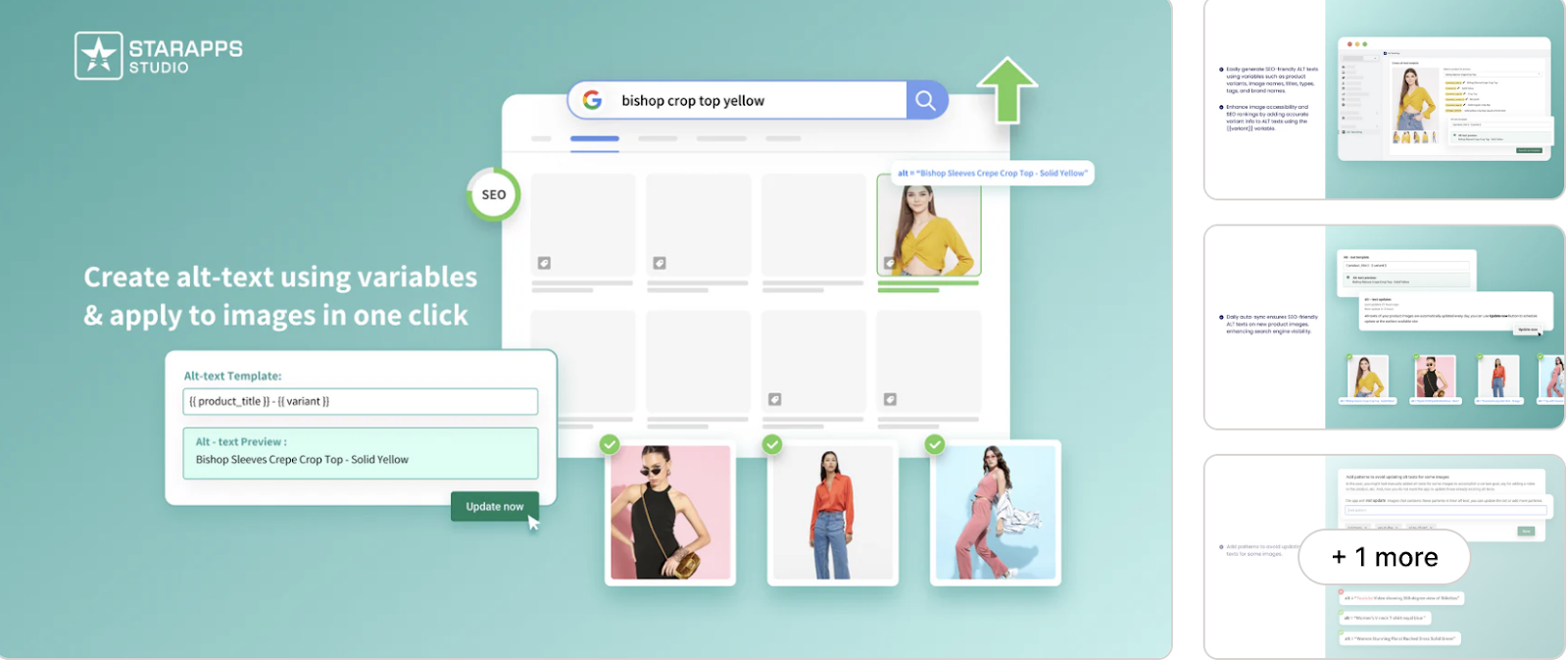
Effortlessly customize ALT texts for your images, improving both SEO and accessibility. This is key to guaranteeing that search engines correctly index your images and that visually impaired users have a better experience navigating your Shopify store.
- One-click optimization for all variant image ALT texts, simplifying the process.
- Improves SEO by guaranteeing all product images are indexed and easily searchable.
- Enhances accessibility, making sure users with disabilities can navigate your site more easily, while improving your search engine rankings.
Variant Title King
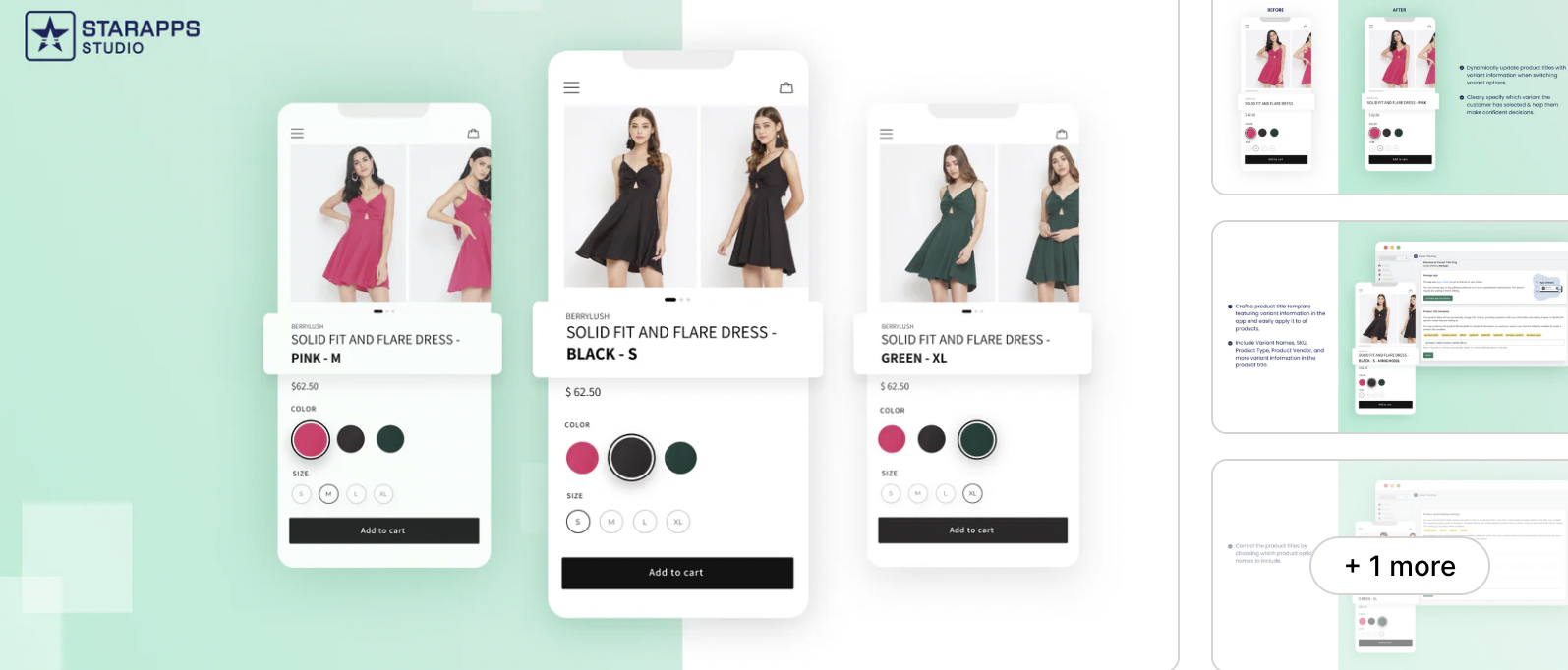
Customize product titles based on the selected variant to verify that each title accurately reflects what the user is viewing. By incorporating image alt text in this process, customers and search engines alike can better understand the exact product.
- Auto-updating titles for each variant, so they match what the user sees.
- Simple setup for easy management, saving time while improving product accuracy.
- Improves clarity and reduces confusion for customers, leading to higher sales and better SEO performance.
These StarApps Studio tools make it clear why image alt text matters for SEO and accessibility: it helps boost visibility on search engines and creates an inclusive shopping experience.
Conclusion
The reasons why image alt text matters for SEO and accessibility cannot be overstated. It’s a vital element in making your Shopify store more discoverable on search engines and ensuring that all customers, including those with disabilities, have a positive experience on your site. Alt text improves your site's SEO by providing context to images, making them more likely to appear in search engine results. It also provides accessibility for users who rely on screen readers to navigate your site.
To simplify the process of adding effective alt text and further improve your store's SEO and accessibility, consider using StarApps Studio’s solutions. With tools like Variant Alt Text King and Variant Title King, you can easily tailor product titles and alt texts, improving both your store’s search rankings and the user experience.
Contact us today to start optimizing your Shopify store today with StarApps to unlock the full potential of your image alt text strategy!
FAQs
- Why is alt text important for SEO?
Alt text provides search engines with contextual information about images, helping them understand the content and rank it properly. This leads to better visibility and higher rankings in search results, especially for image-based searches.
- How does alt text help accessibility?
For users with visual impairments, screen readers rely on alt text to describe images. This allows visually impaired users to navigate your site effectively, improving their overall experience and accessibility to all site content.
- Where should I add alt text on my Shopify store?
Alt text should be added to all images across your store, including product images, promotional banners, logos, and any other visual content. This guarantees that both search engines can index your images and users can access the content.
- How can I automate alt text for product images?
You can use tools like Variant Alt Text King from StarApps Studio, which automatically adds optimized alt text to your product images. This saves time and offers consistent, SEO-friendly alt text across all your images.
- How can alt text improve user experience?
Alt text helps users understand the context of images, especially when they can't view them due to slow loading or visual impairment. It ensures users know what they are viewing, leading to a more engaging and accessible experience on your site.
Heading
End-to-end traceability
To ensure regulatory compliance, you must have a complete overview of your products from production to shipping. Book a demo to see how Katana can give you full visibility of your operations.


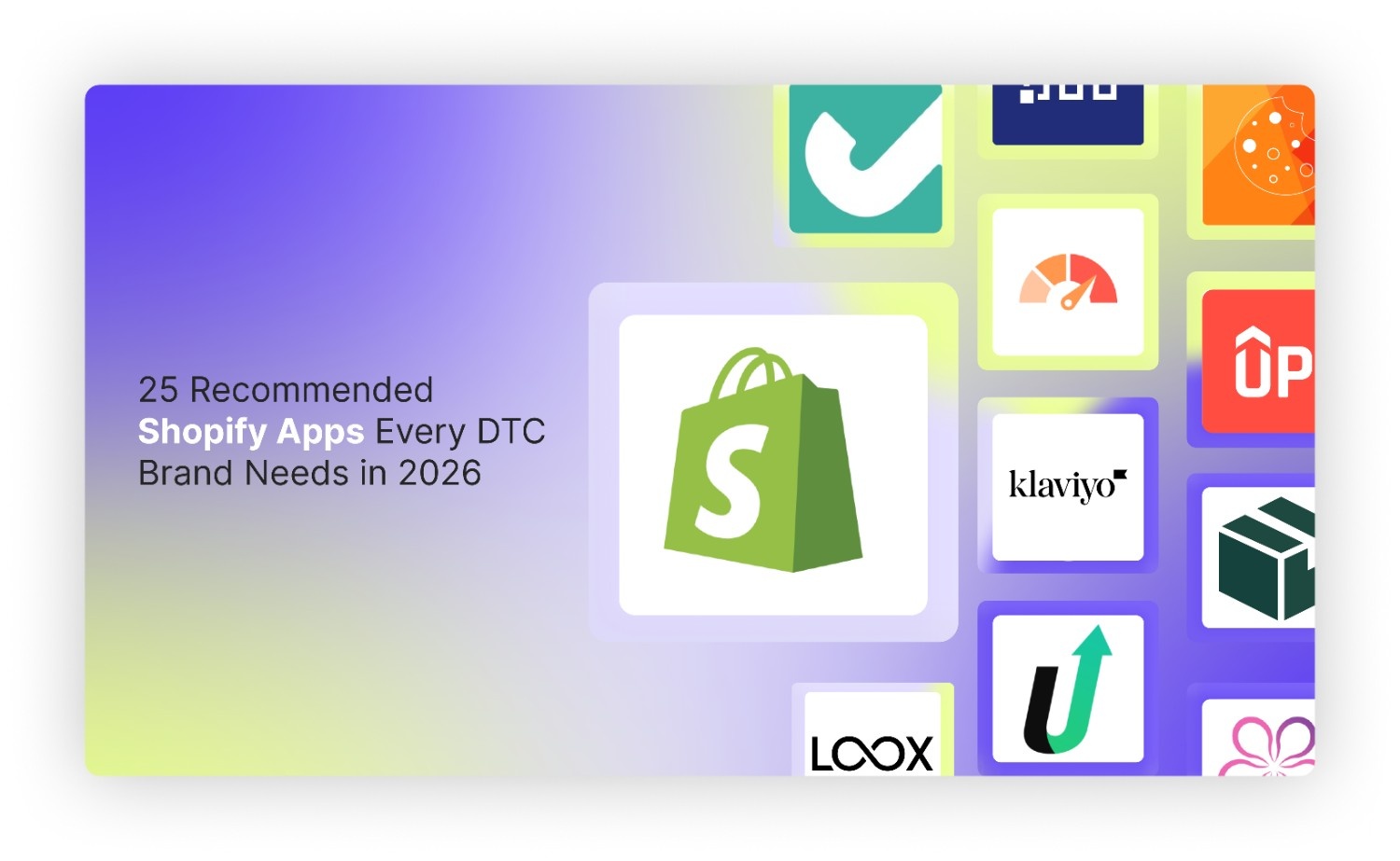

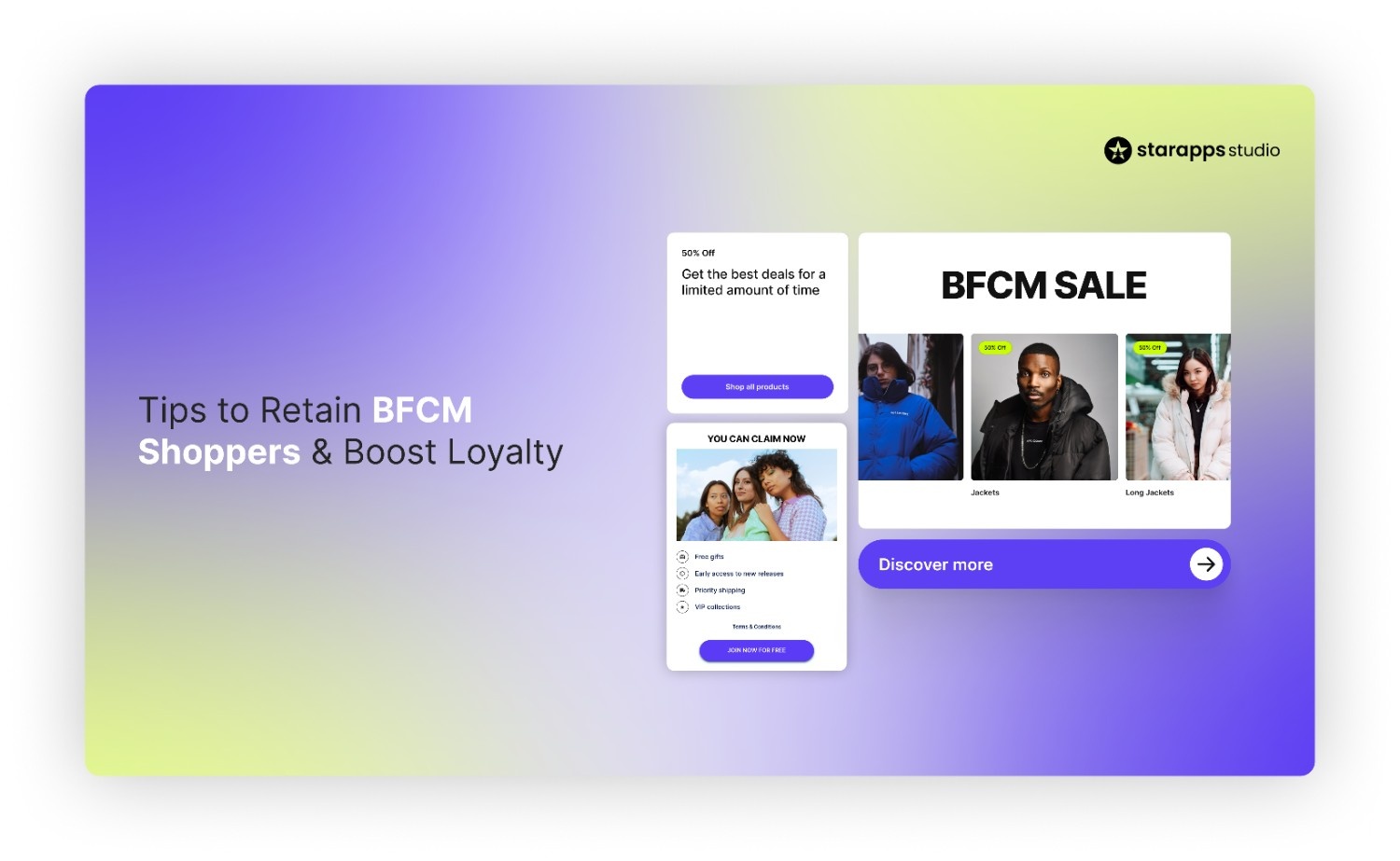
.png)
.png)